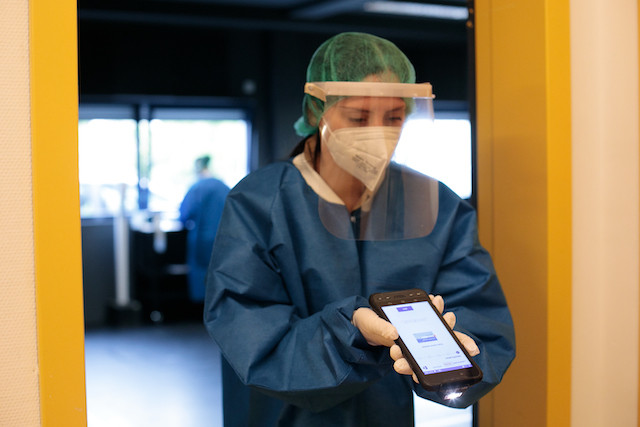Responding to a parliamentary question, last week health minister Paulette Lenert said that 20% of tests can produce a false negative result.
The statement prompted concern as the country is in the midst of a large-scale testing programme in a bid to limit to tame spiralling infection numbers.
According to Professor Claude P. Muller, a researcher for the Infectious Diseases Unit at the Luxembourg Institute of Health, the figure of 20% “false negatives” does not call into question the quality of the tests. He said, it must be put in context, as it essentially depends on the time of the test, and therefore on the government's screening strategy.
“20%, as a scientist, I don't know what exactly this refers to,” Professor Muller told Paperjam.
From a scientific and technical point of view, a false negative is a test that does not detect the presence of virus in a sample, even though it is present. But, from a clinical point of view, it is a test that does not detect as positive a person who is infected.
The difference is not without consequences. When a person is infected, the amount of viral load will increase during the first few days of the incubation period. And it is above a certain threshold that the virus becomes detectable.
“With the very sensitive tests currently in use, this threshold is very low,” Muller was quoted as saying. “From a technical point of view, 'false negatives' are therefore very rare. Because if a person is in the incubation phase at the time of testing, there may not yet be any virus in the sample. The test is then a 'true negative' from a technical point of view. Although clinically, some will say it is a 'false negative', since the person is already infected.”
It is believed the minister was approach the figure from a clinical point of view. But, according to this definition, the percentage of “false negatives” can then vary greatly depending on when people are tested, and therefore on the specifics of the testing strategy chosen by the government.
“Let's say you test a group of people every day from the first day of their infection, and that in general infected people become positive from the fifth day: then these people will be negative four days out of five, which means that in this case, 80% would be 'false negatives' from a clinical point of view,” said Muller. “Conversely, if your strategy is to test only once, for example on the tenth day after infection, at a time when more or less all infected people are positive, you will only find a very small percentage - less than 1% - of 'false negatives'.”
Neither good nor bad
This figure of 20% should be seen in the context of the specific features of Luxembourg’s screening strategy, which combines different approaches in terms of the timing of the tests: broad scale testing, where the timing of the test is random; contact tracing, where it is recommended that people be tested five days after having been in contact with a person who has tested positive; or traditional screening, where a person is tested in the event of suspicious symptoms.
“This figure represents the situation in Luxembourg, where some 20% of people are tested relatively early in the incubation period and later become positive,” added. Muller. “It is therefore not a number that is in itself good or bad.”
In any case, it helps to get the message across that being tested negative, a requirement for travelling to countries like Germany or Switzerland, does not guarantee that there is no infection. It is only a snapshot taken at a given moment. Caution must therefore be exercised in all circumstances.
On 6 August, there were 1,146 active infections in Luxembourg according to government figures, with a positive test rate of 0.67 and a RT eff number of 0.80.
